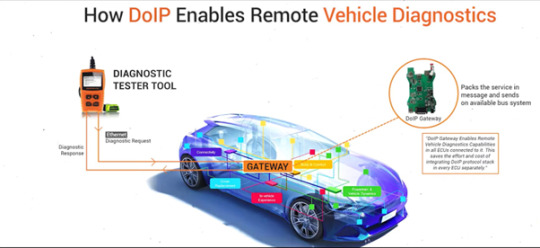#UDSStack
Text
Unified Diagnostic Services Protocol: Enabling Remote Diagnostics for Vehicle ECUs
In the new era of connected cars, the ability to diagnose and troubleshoot vehicle issues remotely has become an invaluable feature. Traditional vehicle diagnosis requires a physical connection to the vehicle's electronic control unit (ECU), which can only be done in a garage or service centre. But with the advent of the Unified Diagnostic Services (UDS) protocol, the game has changed entirely. This blog post will examine how UDS protocol is playing a key role in enabling remote diagnostics in connected cars.
The Essence of Unified Diagnostic Services
Unified Diagnostic Services (UDS) is an automotive diagnostic communication protocol established by the International Organization for Standardization (ISO) under ISO 14229-1. The protocol provides a comprehensive framework for vehicle diagnostics and maintenance, offering services for tasks like reading or erasing fault memory, adjusting vehicle parameters, and programming new firmware.

DoIP and UDS Enabling Remote Vehicle Diagnostics
UDS Protocol and the Power of Remote Diagnostics
Remote diagnostics is a process whereby vehicle faults and performance data are collected, analysed, and addressed remotely, typically through a wireless network. This approach reduces the need for physical maintenance and enhances the overall user experience.
Connected cars equipped with telematics systems can utilize the UDS protocol for remote diagnostics in the following ways:
Fault Detection: When a vehicle system encounters a problem, the UDS protocol can facilitate the collection of detailed diagnostic trouble codes (DTCs). These codes can be transmitted to the manufacturer's server, where they are analyzed to identify the exact nature of the fault.
Preventive Maintenance: UDS can also enable the periodic transmission of vehicle performance data. By analyzing this data, potential faults can be detected early, allowing for preventive maintenance before a serious problem develops.
Remote Repair: For some software-related issues, the problem can be fixed remotely by adjusting system parameters or updating the ECU firmware. This is possible thanks to UDS services like 'Input Output Control' and 'Routine Control', which can be used to modify system settings and perform software updates.
Advantages of UDS Protocol Driven Remote Diagnostics
The impact of UDS-enabled remote diagnostics on the automotive industry and vehicle owners is profound:
Efficiency: With remote diagnostics, potential vehicle faults can be detected and resolved promptly, minimizing downtime and enhancing vehicle performance and lifespan.
Convenience: Vehicle owners no longer need to visit a service center for every minor issue. Many problems can be resolved remotely, saving time and effort.
Proactive Maintenance: Regular transmission of vehicle data allows for preventive maintenance, reducing the likelihood of serious breakdowns and enhancing vehicle safety.
Cost Savings: By addressing issues early and reducing the need for physical service visits, remote diagnostics can lead to substantial cost savings for both vehicle owners and manufacturers.
Conclusion
The UDS protocol has become an integral part of the remote diagnostics process in connected cars, bringing a new level of efficiency, convenience, and safety to vehicle maintenance. As vehicles continue to evolve, becoming more interconnected and intelligent, the role of UDS protocol in enabling innovative features like remote diagnostics is set to grow exponentially.
0 notes